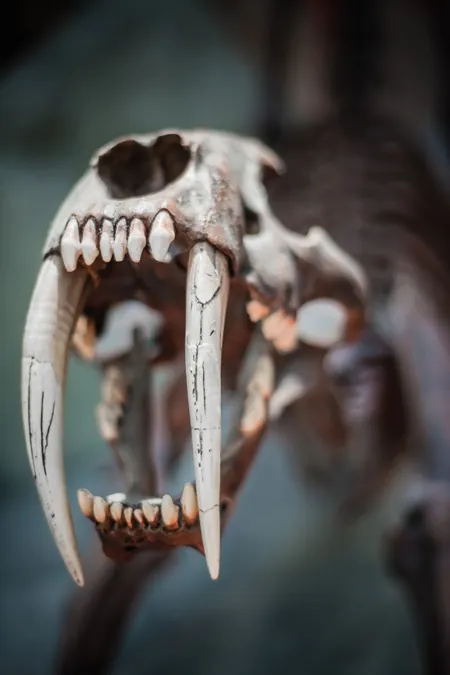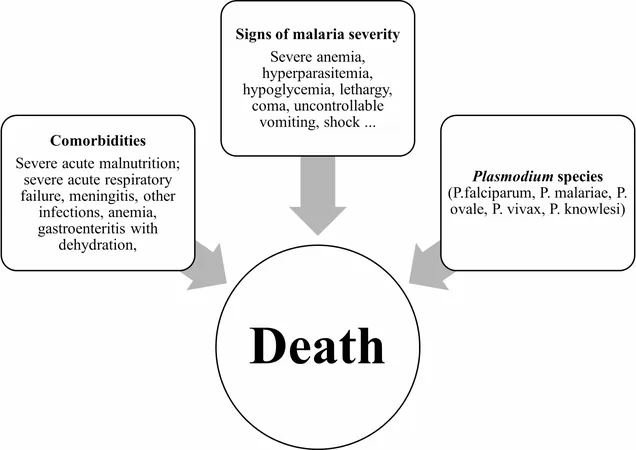
Unveiling the Secrets of Sabre-Toothed Predators: A Journey Through Time
2025-03-26
Author: Wei Ling
The Remarkable World of Sabre-Toothed Predators
Once a dominant force in ecosystems worldwide, sabre-toothed predators have captured the imagination of many with their distinctive appearance and predatory prowess. Found in fossils across North America, Europe, Africa, and Asia, these ancient creatures are primarily recognized for their elongated, razor-sharp canine teeth known as sabres. Unlike the stout conical canines of contemporary big cats like lions and tigers, sabre teeth are long, slender, and laterally flattened, designed for a lethal purpose.
Interestingly, the origins of these iconic teeth trace back to over 265 million years ago, long before the dinosaurs roamed the Earth, emerging during the age of mammal-like reptiles known as gorgonopsids. This evolutionary marvel highlights the adaptability and resilience of life on our planet.
Repeated Evolution: Nature's Innovation
Throughout millions of years, sabre teeth have evolved in numerous carnivorous mammals and their relatives, giving rise to various species, including marsupials like Thylacosmilus and other so-called 'false' sabre-tooth cats such as Barborofelis. Among them, the Smilodon, often immortalized in popular culture, stood out as the most recognized sabre-toothed predator, thriving until approximately 10,000 years ago.
Research indicates that these formidable predators predominantly targeted large prey, using their powerful neck muscles to deliver slashing bites to vital areas such as the throat, effectively aiding in a swift kill. The strategic design of their teeth was a crucial factor in this grisly efficiency.
Understanding the Mechanics: The Quest for Optimal Design
To comprehend the evolutionary success of sabre teeth, a team of researchers embarked on an ambitious study, examining over 200 different carnivorous teeth from both extinct sabre-toothed species and modern carnivores. Their goal was to determine whether the shape of these teeth represented an optimal balance for two critical functions: sharpness for effective puncturing and robustness to withstand breakage.
Advanced methodologies were employed, including 3D modeling of tooth shapes and rigorous testing through simulations and experiments using 3D-printed stainless steel models. These investigations revealed that certain sabre teeth were finely tuned for puncturing while sacrificing some durability, leading to higher risks of breakage under extreme conditions.
A Continuum of Adaptations: Sabre-Tooth Diversity
Challenging the traditional notion of categorizing sabre-toothed species into two distinct groups—dirk-toothed and scimitar-toothed—the research uncovered a surprising continuum of tooth shapes. This spectrum ranged from the extreme, curved canines of species like Barbourofelis and Hopolophoneus to the more robust, straight teeth of Dinofelis and Nimravus.
Interestingly, while the more extreme sabre-toothed forms, such as Smilodon, were particularly efficient at puncturing prey, they bore the risk of significant breakage under high stress. Conversely, the less extreme forms illustrated a more balanced relationship between puncture efficiency and strength, suggesting a greater variety of hunting strategies among different sabre-toothed species than previously recognized.
Implications of Evolutionary Specialization: The Price of Perfection
The study's findings offer compelling insights into why extreme forms of sabre teeth evolved independently across species, leading to their remarkable specialization as hunters. However, this specialization may have also contributed to their eventual extinction, as such highly optimized traits left them vulnerable to shifts in their environments and prey availability. As ecosystems transformed, these once-mighty predators may have found themselves outmatched by changing dynamics.
The research not only enriches our understanding of sabre-toothed predators but also illuminates the principles of evolution at play across various species. By merging ecological and biomechanical studies, we gain deeper insights into how natural selection molds organisms to excel in specific niches.
Nature's Craftsmanship: Lessons for Modern Innovation
Ultimately, the sabre tooth serves as a remarkable illustration of the interplay between sharpness and durability—a challenge that parallels many human engineering pursuits. As engineers seek to create precision tools that require both strength and efficiency, the evolutionary strategies of these ancient carnivores become a source of inspiration. From surgical instruments to industrial tools, the principles that guided nature’s design can inform modern innovations, demonstrating the enduring legacy of sabre-toothed predators.
In this way, the study of long-extinct species not only unveils the mysteries of the past but also paves the way for advancements in our contemporary world.





 Brasil (PT)
Brasil (PT)
 Canada (EN)
Canada (EN)
 Chile (ES)
Chile (ES)
 Česko (CS)
Česko (CS)
 대한민국 (KO)
대한민국 (KO)
 España (ES)
España (ES)
 France (FR)
France (FR)
 Hong Kong (EN)
Hong Kong (EN)
 Italia (IT)
Italia (IT)
 日本 (JA)
日本 (JA)
 Magyarország (HU)
Magyarország (HU)
 Norge (NO)
Norge (NO)
 Polska (PL)
Polska (PL)
 Schweiz (DE)
Schweiz (DE)
 Singapore (EN)
Singapore (EN)
 Sverige (SV)
Sverige (SV)
 Suomi (FI)
Suomi (FI)
 Türkiye (TR)
Türkiye (TR)
 الإمارات العربية المتحدة (AR)
الإمارات العربية المتحدة (AR)